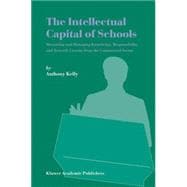
| Preface | |
| Introduction to the concept of intellectual capital | |
| Introduction | |
| The post-industrial business environment Managing intellectual capital A theory of intellectual capital for schools Summary | |
| Constructing a typology for intellectual capital | |
| Introduction | |
| Thinking capital | |
| Non-thinking capital | |
| Flows of intellectual capital | |
| New language; new measures | |
| Summary | |
| The measurement of responsibility | |
| Introduction | |
| Job descriptions for salaried jobs | |
| The measurement of responsibility | |
| Manual and hourly-rated work | |
| The totality of work Summary | |
| A new Profile Guide Chart method for job evaluation in schools Introduction A Profile Guide Chart method for use in schools | |
| The scales on the Guide Charts Post evaluation cross checks and correlation | |
| Examples of evaluation using Guide Charts | |
| Summary | |
| Pay and incentives in an education setting | |
| Introduction Performance related pay for teachers: moral hazard, adverse selection and principal-agent resistance | |
| Conflict between the individual and the collective Paying employees on the basis of output Summary | |
| The retention of intellectual capital: managing continuity Introduction Conceptualising knowledge continuity management | |
| Challenges to knowledge continuity The benefits of knowledge continuity management Knowledge continuity management in practice Summary | |
| Implementing a knowledge continuity initiative: an adjunct of lessons from practice | |
| Introduction | |
| Prioritising critical processes Mapping critical processes | |
| The knowledge continuity audit and implementing a continuity initiative | |
| The value of networks and team-working to knowledge continuity management | |
| Reshaping an organisation as a network of teams | |
| Supporting networking within and between schools | |
| Barriers to intellectual capital networking and knowledge continuity management | |
| Observations on team networking in intellectual capital schools | |
| Summary | |
| Intellectual capital metrics | |
| Introduction | |
| Gauging the organisational importance of intellectual capital | |
| Identifying and analysing intangible assets | |
| Exploiting intangible assets | |
| Measuring the efficiency of knowledge work and knowledge workers | |
| Putting a value on intellectual capital | |
| Summary | |
| Conclusion | |
| Appendix: Two-sided mixed-motive games of strategy: four archetypes | |
| Bibliography | |
| Table of Contents provided by Publisher. All Rights Reserved. |
The New copy of this book will include any supplemental materials advertised. Please check the title of the book to determine if it should include any access cards, study guides, lab manuals, CDs, etc.
The Used, Rental and eBook copies of this book are not guaranteed to include any supplemental materials. Typically, only the book itself is included. This is true even if the title states it includes any access cards, study guides, lab manuals, CDs, etc.